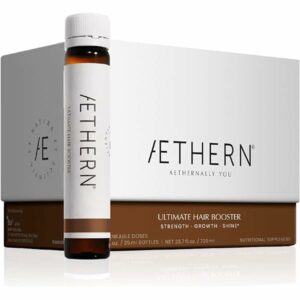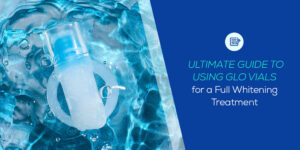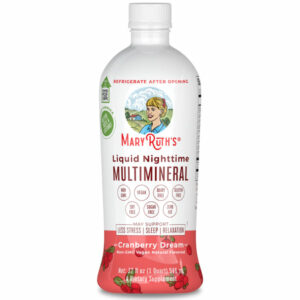Sebum Plugs are clogged pores caused by an overproduction of sebum, leading to blackheads and whiteheads on the skin. Sebum plugs, also known as clogged pores, occur when the skin produces too much sebum.
This excess oil combines with dead skin cells and other impurities to form plugs that block the pores. These plugs can manifest as blackheads or whiteheads on the skin. They are a common skin concern and can be treated with proper skincare routines and treatments.
We will delve into the causes, symptoms, and effective solutions for sebum plugs, helping you achieve clearer, healthier skin.
Table of Contents
What Are Sebum Plugs?
Sebum plugs are a common skin concern that many people experience. These plugs, also known as comedones, are formed when excess sebum combines with dead skin cells and clogs the hair follicles. They can appear as small bumps or blackheads on the skin’s surface.
Understanding the formation and characteristics of sebum plugs is crucial in managing and treating them effectively. Sebum plugs are primarily caused by excessive oil production and an accumulation of dead skin cells. Factors such as hormonal imbalances, genetics, and certain skincare products can contribute to their development.
| Formation | Characteristics |
|---|---|
| Excessive sebum production | Small bumps or blackheads on the skin |
| Accumulation of dead skin cells | Common in areas with high sebaceous gland activity (such as the T-zone) |
| Hormonal imbalances | Can be firm or soft in texture |
| Genetic predisposition | May lead to localized or widespread sebum plug formation |
| Skincare product usage | Can cause pore blockage and exacerbate sebum plug formation |
Although sebum plugs are not a serious health concern, they can be bothersome and affect the appearance of the skin. Regular cleansing, exfoliation, and oil control strategies can help manage and prevent their formation. It is advisable to seek professional advice from a dermatologist for personalized skincare recommendations based on your skin type and condition.
The Science Behind Sebum Plugs
Sebum plugs are small accumulations of oil that can clog the hair follicles. To understand these plugs better, we need to explore the role of sebaceous glands in sebum production. Sebaceous glands are microscopic glands in the skin that produce sebum, an oily substance that helps keep our skin moisturized and prevents it from drying out.
Several factors can contribute to sebum overproduction, including hormonal imbalances, genetics, and certain medications. Hormones like androgens can stimulate the sebaceous glands to produce more sebum, leading to an excess amount being released into the hair follicles.
Sebum plugs are closely linked to acne development. When there is an excess of sebum being produced, combined with the presence of dead skin cells and bacteria on the skin’s surface, the hair follicles can become clogged. This creates an ideal environment for the growth of acne-causing bacteria, leading to inflammation and breakouts.
| Role of sebaceous glands in sebum production | Factors that contribute to sebum overproduction | Connection between sebum plugs and acne |
|---|---|---|
| Sebaceous glands produce sebum, which moisturizes the skin | Hormonal imbalances, genetics, and medications | Excess sebum combines with dead skin cells and bacteria to clog hair follicles, leading to acne |
Identifying Sebum Plugs On Your Skin
Sebum plugs, also known as comedones, are a common skin concern that can affect people of all ages. Understanding the signs and symptoms of sebum plugs is crucial in differentiating them from other skin conditions.
- Small, raised bumps on the skin
- Black or whiteheads
- Oily or greasy skin
- Enlarged or clogged pores
How to differentiate sebum plugs from other skin conditions:
Sebum plugs can be mistaken for other skin conditions such as acne or milia. However, unlike acne, sebum plugs are not inflamed and do not have redness or pus. Milia, on the other hand, are small, white cysts that are not associated with excess oil production. Additionally, sebum plugs can be easily extracted from the skin while milia cannot.
| Common areas for sebum plugs | Skin type |
|---|---|
| T-zone (forehead, nose, and chin) | Combination to oily skin |
| Cheeks and jawline | Dry to normal skin |
Identifying and understanding sebum plugs is crucial in developing an effective skincare routine. Regular cleansing, exfoliation, and proper hydration can help prevent and manage sebum plugs for healthier, clearer skin.
Cleansing Your Skin: The First Step To Combat Sebum Plugs
Daily cleansing is the first and crucial step for preventing and combating sebum plugs. These clogged pores can lead to acne breakouts and dull skin. For sebum plug-prone skin, it is important to use gentle cleansers that effectively remove impurities without stripping away natural oils. Look for cleansers that contain key ingredients such as salicylic acid and glycolic acid. These exfoliating agents help to break down excess sebum and unclog pores, reducing the formation of sebum plugs. Additionally, look for cleansers with tea tree oil or witch hazel, which have anti-inflammatory properties to soothe irritated skin and prevent future sebum plugs. Choosing a non-comedogenic cleanser, free of harsh sulfates and fragrances, is also important to prevent further irritation and pore clogging. Incorporating a gentle cleansing routine into your skincare regimen can effectively manage sebum plugs and promote healthier, clearer skin.
Exfoliation: Unclogging Pores And Removing Sebum Plugs
To effectively get rid of sebum plugs and keep your skin healthy, incorporating exfoliation into your skincare routine is key. There are various methods you can utilize to exfoliate and combat sebum plugs:
- Chemical Exfoliation: Incorporate alpha hydroxy acids (AHAs) or beta hydroxy acids (BHAs) into your routine. These ingredients gently dissolve dead skin cells and unclog pores, promoting a clearer complexion.
- Physical Exfoliation: Utilize gentle facial scrubs or exfoliating brushes to physically remove dead skin cells and sebum plugs from the skin’s surface.
- Enzyme Exfoliation: Enzymes such as pineapple or papaya extracts can effectively break down sebum plugs without scrubbing or irritation. Look for exfoliating products that contain these natural enzymes.
If you’re in search of effective exfoliating products for sebum plug-prone skin, consider the following options:
| Product | Key Ingredients | Suitable for |
|---|---|---|
| AHA/BHA toner | Alpha hydroxy acids (AHAs) and beta hydroxy acids (BHAs) | All skin types prone to sebum plugs |
| Gentle exfoliating scrub | Natural exfoliants (e.g., jojoba beads or rice bran) | Normal to oily skin prone to sebum plugs |
| Enzyme-based exfoliator | Pineapple or papaya extracts | Sensitive skin prone to sebum plugs |
Balancing Sebum Production: Tips For Oil Control
Sebum plugs, also known as oil plugs or clogged pores, can be a frustrating skin concern. Healthy sebum production is essential for maintaining balanced skin, but when it becomes excessive, it can lead to oily skin and clogged pores. Regulating sebum production is the key to keeping your skin looking fresh and clear.
One way to balance sebum production is by paying attention to your diet and lifestyle. Consuming a balanced diet with plenty of antioxidant-rich foods can help support healthy skin by reducing oxidative stress. Additionally, staying hydrated and getting enough sleep are crucial for maintaining optimal skin health.
Another effective way to control sebum production is by using skincare ingredients that can help regulate oil levels. Look for ingredients such as salicylic acid, which exfoliates dead skin cells and unclogs pores. Niacinamide is another beneficial ingredient that helps regulate sebum production while reducing inflammation.
| Skincare Ingredients | Benefits |
|---|---|
| Salicylic Acid | Exfoliates dead skin cells, unclogs pores |
| Niacinamide | Regulates sebum production, reduces inflammation |
By incorporating these tips and ingredients into your skincare routine, you can balance sebum production and minimize the appearance of sebum plugs. Remember, consistency is key when it comes to achieving and maintaining clear, healthy skin.
Chemical Peels: An Effective Treatment For Sebum Plugs
Chemical peels effectively target and treat sebum plugs, providing a solution to clear clogged pores. This treatment removes dead skin cells and excess oil, leaving the skin refreshed and rejuvenated.
Exploring The Benefits And Risks Of Chemical Peels
Chemical peels offer an effective solution for treating sebum plugs, which are stubborn clogged pores that can lead to acne breakouts and skin congestion. By exfoliating the skin’s surface, chemical peels can help remove the buildup of dead skin cells and sebum plugs, unclogging pores and promoting a clearer complexion.
One of the benefits of chemical peels is their ability to stimulate collagen production, improving skin texture and reducing the appearance of fine lines and wrinkles. They can also help to even out skin tone, reduce pigmentation, and diminish the appearance of acne scars.
However, it is important to note that chemical peels can have some risks and side effects. Mild redness, flaking, and dryness are common after a peel, but these usually subside within a few days. It is crucial to follow the dermatologist’s instructions for post-treatment care to minimize the risk of complications such as infection or hyperpigmentation.
In conclusion, chemical peels can be an effective treatment for sebum plugs, offering various benefits for overall skin health. However, it is essential to consult with a qualified professional to assess your skin type and determine the most suitable peel strength and frequency for optimal results.
Microdermabrasion: Resurfacing Your Skin And Minimizing Sebum Plugs
Microdermabrasion is a non-invasive cosmetic procedure that helps improve the appearance of the skin by resurfacing its outermost layer. It is particularly effective in treating sebum plugs, those pesky clogs that can form in the hair follicles and lead to acne breakouts. During the microdermabrasion process, a handheld device is used to gently exfoliate the skin, removing dead cells and unclogging the pores. This not only helps to clear existing sebum plugs but also prevents new ones from forming. The benefits of microdermabrasion go beyond sebum plug reduction; it can also enhance the skin’s texture, reduce the appearance of fine lines and wrinkles, and promote collagen production. Microdermabrasion is a versatile treatment suitable for all skin types and can be combined with other skincare procedures for optimal results.
Dermatologist-recommended Procedures: Advanced Solutions For Sebum Plugs
When dealing with sebum plugs, sometimes over-the-counter products may not be sufficient in removing these stubborn clogs. Dermatologists often recommend advanced medical procedures for more effective results. Two common procedures are extractions and laser treatments.
| Procedure | When to Consider | Why Consider |
|---|---|---|
| Extractions | If sebum plugs are resistant to traditional treatments | Helps remove deep and stubborn sebum plugs, preventing further breakouts |
| Laser Treatments | If sebum plugs are recurring or causing severe skin issues | Targets sebaceous glands, reducing sebum production and preventing future plug formation |
If sebum plugs are persistent and causing significant distress, consulting a dermatologist is recommended to assess the severity of the condition. These procedures can offer lasting relief and improve the overall health and appearance of the skin.

Credit: www.discountmags.com
Herbal And Diy Remedies For Sebum Plugs
Sebum plugs, also known as blackheads, are a common skin concern that can be effectively treated with herbal and DIY remedies. Exploring natural ingredients for sebum plug treatment can provide gentle yet effective solutions for unclogging the pores and improving the overall appearance of the skin.
When it comes to homemade remedies and masks for sebum plug removal, there are several options to consider. One popular ingredient is tea tree oil, which has natural antibacterial properties that can help reduce the occurrence of blackheads. Baking soda mixed with water can also serve as an exfoliating scrub to remove sebum plugs and dead skin cells.
Another effective remedy is the use of organic honey, which has both antimicrobial and moisturizing properties. Applying a honey mask to the affected areas can help draw out impurities and keep the skin hydrated. Aloe vera gel is another soothing ingredient that can be used as a natural remedy for sebum plug removal.
In addition to these ingredients, there are various other herbal remedies and DIY masks that can be explored for sebum plug treatment. From coconut oil to green tea, these natural options can provide a holistic approach to improving skin health and reducing the occurrence of sebum plugs.
By incorporating these herbal and DIY remedies into your skincare routine, you can effectively address sebum plugs and promote a clearer, healthier complexion.
Lifestyle Changes For Long-term Prevention Of Sebum Plugs
Lifestyle Changes for Long-Term Prevention of Sebum Plugs
Managing stress is crucial in preventing sebum plugs. High levels of stress can trigger hormonal imbalances, leading to increased sebum production. Incorporating stress-relief techniques like meditation, deep breathing, and regular exercise can help reduce stress levels and maintain healthier skin. Regular exercise not only alleviates stress but also improves blood circulation, helping to clear clogged pores. Hydration is equally important in preventing sebum plugs. Drinking an adequate amount of water throughout the day helps flush out toxins and keeps the skin hydrated, reducing the formation of sebum plugs. Furthermore, maintaining a healthy diet rich in fruits, vegetables, and omega-3 fatty acids can also support overall skin health, minimizing sebum plug formation.
Dietary Adjustments To Reduce Sebum Plug Formation
Foods to avoid in order to minimize sebum plug production include:
- Highly processed and refined carbohydrates, such as white bread, pasta, and sugary snacks, as they can cause a surge in insulin levels, leading to increased sebum production.
- Dairy products, particularly milk, as they contain hormones that can stimulate the skin’s oil glands.
- Fried and greasy foods, as they can contribute to clogged pores and sebum plug formation.
- Excessive consumption of Omega-6 fatty acids found in vegetable oils, such as soybean oil and corn oil, as they promote inflammation in the body, including the skin.
On the other hand, incorporating certain nutrients and supplements can support healthy skin and reduce sebum plug formation:
- Vitamin A is essential for skin health and can help regulate sebum production. Foods rich in vitamin A include carrots, sweet potatoes, spinach, and beef liver.
- Zinc plays a crucial role in controlling sebum production and maintaining healthy skin. Good sources of zinc include oysters, beef, pumpkin seeds, and lentils.
- Omega-3 fatty acids found in fatty fish like salmon and sardines, as well as walnuts and chia seeds, have anti-inflammatory properties and can help improve skin health.
- Green tea contains antioxidants that can help reduce sebum production and calm inflammation in the skin. Incorporate green tea into your daily routine for added skin benefits.
Frequently Asked Questions For Sebum Plugs
What Are Sebum Plugs?
Sebum plugs are small, waxy accumulations that clog hair follicles. They are made up of excess sebum (oil), dead skin cells, and debris, and can result in acne breakouts or blackheads.
How Are Sebum Plugs Formed?
Sebum plugs are formed when the sebaceous glands produce an excess of sebum, which mixes with dead skin cells and debris. When this mixture becomes trapped in a hair follicle, it forms a plug that can lead to blockages and inflammation.
How To Prevent Sebum Plugs?
Preventing sebum plugs involves maintaining good skincare habits. Regularly cleansing your face with a gentle cleanser can help remove excess oil and prevent the buildup of sebum plugs. Additionally, exfoliating regularly and using non-comedogenic skincare products can further reduce the risk of sebum plug formation.
Can Sebum Plugs Be Removed At Home?
While it is possible to remove sebum plugs at home, it is important to do so with caution. Using gentle exfoliation and steam to open up pores, followed by gentle extraction using clean tools, can help remove sebum plugs. However, excessive force or improper techniques can lead to skin damage or infection.
Consulting a dermatologist for professional removal is recommended.
Conclusion
Sebum plugs can be a frustrating skin issue, but understanding their causes and treatment options can help manage and prevent their recurrence. By maintaining a consistent skincare routine, addressing underlying factors like hormonal imbalances, and seeking professional advice when needed, individuals can effectively keep sebum plugs at bay.
Remember, a healthy and balanced approach to skincare is key for achieving clear and radiant skin.








